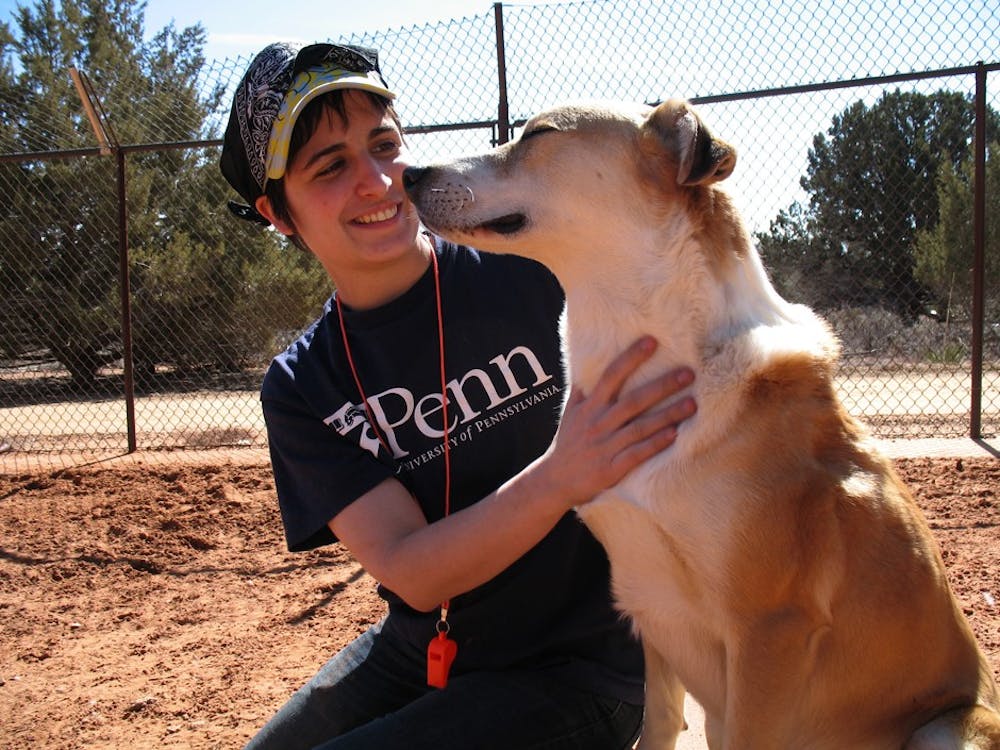As his peers returned to campus this week with stories of beaches and nightclubs, College sophomore Andrew Jakubowski brought back a less glamorous — yet no less enjoyable — set of memories.
With 13 other students, Jakubowski spent his spring break poop-scooping and wrestling with puppies in Utah. Best Friends Animal Society, the nation’s largest shelter for homeless domestic animals, was one of many destinations of this year’s Alternate Spring Break trips.
Founded in 1990, ASB gives students an opportunity to spend their time off participating in service projects all over the country.
“No drinking, no drugs — just service,” said College senior and ASB co-director Jessie Spellman, adding that the trips were unequivocally her best weeks at Penn.
This break, nine trips — composed of 14 students each — traveled to six states.
Five of the groups were organized through Habitat for Humanity, an organization devoted to building low-income housing. One of these ventured south to build houses in areas still affected by Hurricane Katrina, which hit in 2005.
“After a big disaster, things kind of calm down after a year,” College junior and ASB Treasurer Sarah Smith said. “Five years down the road, people are dealing with housing problems that exist much longer than the media lets us believe.”
Other students did environmental work in Florida’s Everglades and worked on urban poverty projects in Virginia.
Over the years, such trips have been popular among students who want to become civically engaged. They also allow students to reach outside their social spheres at Penn because the leaders “set up the trips so you’re not with your friends,” according to Smith.
“I really like getting thrown together with a group of Penn students I wouldn’t have known otherwise,” College junior and trip participant Anna Caffrey added. Having gone on an ASB trip every spring since her freshman year, she recalled coming back to campus each time with a new set of close friends and a satisfaction of being “able to actually get [her] hands dirty.”
“In some respect, you can do more by sending a donation, but the appeal of ASB is to do something completely different,” Smith admitted. “It’s very rare to spend a week doing construction work and feel good about your physical contribution.”
Though service trips only lasting a week are often criticized for making an unsustainable impact, ASB participants see the worth of their small role in a much larger charitable effort.
“The people who organize the trip do a good job of looking for long-term projects that need short-term volunteers,” Caffrey said. Habitat, for example, gets a fresh group of 100 to 200 volunteers at each of their locations every week. “Even though we’re a small part, we’re an important part,” she said.
Caffrey added that Habitat hosted the highest-ever number of volunteers last week in Bay St. Louis, Mississippi. Since there weren’t enough tools for everyone, “a lot of time we were standing there doing nothing, but the experience as a whole was valuable,” so Caffrey did not feel frustrated.
Additionally, educational objectives are often more important than immediate philanthropic results in the long term, according to Katherina Rosqueta, executive director of the Center for High Impact Philanthropy.
“If you go on a trip and you have a life-changing experience that makes you want to go into a career in social policy, it’s well worth it,” added Carol McLaughlin, CHIP research director for global public health.
As an undergraduate at Princeton University, McLaughlin left the United States for the first time on a similar trip.
“I decided to go into international public health and devote my career to this,” she said. “If I didn’t have that opportunity, I would have never thought of those issues.”
Both Rosqueta and McLaughlin emphasized that one of the most important roles of a volunteer on a service trip is “giving a voice” to the communities after the week is over.
Though Jakubowski plans to advocate for the animals at Best Friends in the future, he never questioned the value of his brief presence at the animal sanctuary.
“With any service trip, sometimes you think, ‘What kind of impact is this having?’ But we could really see, especially in terms of cleaning, that there was no way they had enough people to do all that needed to be done,” he said.
Best Friends employs over 400 people, but the non-governmental organization’s operations depend heavily on volunteers everyday.
The goal of the shelter is to get as many animals adopted as possible, and to be adopted, these cats, dogs, horses, rabbits and even birds must be comfortable around humans, Jakubowski explained.
“They get a lot of donations, but it comes down to manpower,” he said. “Volunteering had a much greater impact than just sending a donation.”
Because he’s turning 21 next spring break, Jakubowski isn’t sure how he’ll spend his next week off. “But I would encourage everyone to go on a trip — I can’t explain how good it is in words.”



